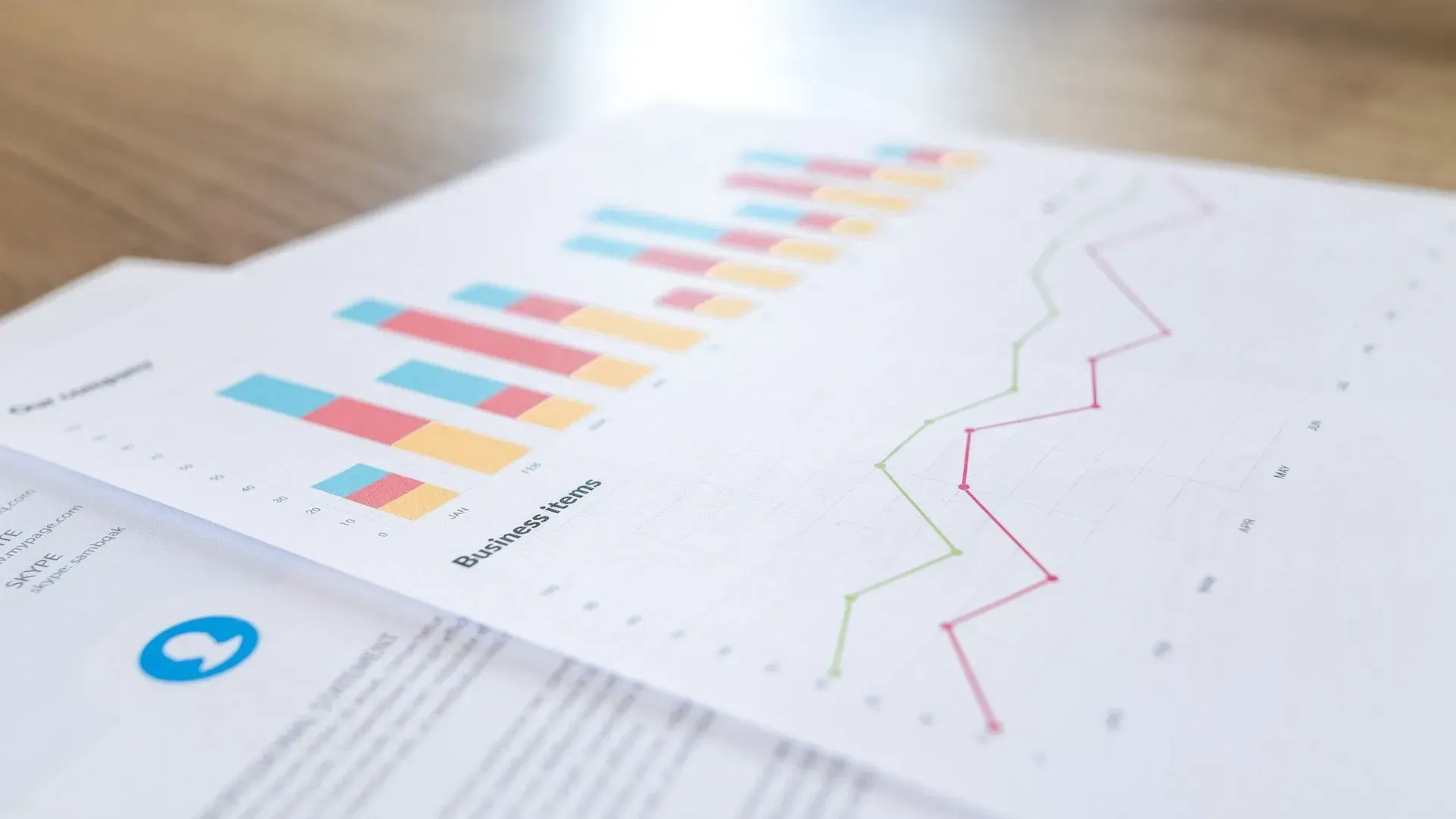Tableau Software: Revolutionizing Data Visualization and Business Intelligence
In today's data-driven world, the ability to analyze and interpret vast amounts of data is crucial for organizations seeking to maintain a competitive edge. Tableau Software has emerged as a leading tool in the realm of data visualization and business intelligence (BI), enabling users to convert complex data into understandable and actionable insights. This article explores the features, benefits, and applications of Tableau, illustrating why it has become a cornerstone in modern data analytics.
Overview of Tableau Software
Tableau Software, founded in 2003 by Christian Chabot, Pat Hanrahan, and Chris Stolte, was developed with the goal of making data analysis more accessible to non-technical users. The software's core strength lies in its ability to transform raw data into visually appealing and interactive visualizations, such as charts, graphs, and dashboards. Tableau's drag-and-drop interface allows users to create sophisticated data visualizations without needing extensive programming skills, making it a versatile tool for professionals across various industries.
Key Features of Tableau
1. User-Friendly Interface
Tableau's intuitive drag-and-drop interface is designed to simplify the data visualization process. Users can easily connect to data sources, select the desired fields, and create visualizations by dragging and dropping elements onto a workspace. This user-friendly design reduces the learning curve, enabling even those with minimal technical expertise to generate complex visualizations quickly.
2. Data Connectivity
One of Tableau's standout features is its ability to connect to a wide variety of data sources. Whether it's a simple Excel spreadsheet, a complex SQL database, or cloud-based services like Google Analytics and Salesforce, Tableau can integrate seamlessly. This extensive connectivity ensures that users can work with diverse datasets without the need for additional data integration tools.
3. Real-Time Data Analysis
Tableau supports real-time data analysis, allowing users to make decisions based on the most current information available. This capability is particularly valuable for industries where timely data insights are crucial, such as finance, retail, and healthcare. Real-time analysis helps organizations respond swiftly to emerging trends and changes in their environment.
4. Interactive Dashboards
Tableau enables users to create interactive dashboards that provide a comprehensive view of key metrics and performance indicators. These dashboards can include various types of visualizations and allow users to interact with the data through filters, drill-downs, and highlights. Interactive dashboards make it easier to explore data from different angles and uncover deeper insights.
5. Advanced Analytics
Beyond basic visualization, Tableau offers advanced analytical capabilities such as trend lines, forecasting, and clustering. These tools enable users to perform sophisticated data analysis and predictive modeling, helping them to identify patterns and forecast future outcomes. Advanced analytics in Tableau can be enhanced with the integration of scripting languages like R and Python for more complex statistical analysis.
6. Collaboration and Sharing
Tableau provides robust options for sharing visualizations and dashboards within and outside an organization. Users can publish their work to Tableau Server or Tableau Online, making it accessible to colleagues and stakeholders. Tableau's collaboration features facilitate teamwork and ensure that everyone has access to the same data and insights, promoting a data-driven culture.
7. Mobile Compatibility
With Tableau's mobile app, users can access their dashboards and visualizations on the go. The app is designed to provide a seamless experience on mobile devices, ensuring that users can stay informed and make decisions even when they are away from their desks. This mobile compatibility extends the reach of Tableau's powerful analytics to any location.
Benefits of Using Tableau
1. Enhanced Decision-Making
Tableau's ability to present data in clear, visual formats helps organizations make better-informed decisions. By visualizing complex data sets, users can quickly grasp important trends and patterns, leading to more effective strategic planning and operational adjustments. Tableau's visual analytics facilitate a deeper understanding of data, allowing decision-makers to act with greater confidence.
2. Time Savings
The ease of use and automation capabilities of Tableau significantly reduce the time required to create and update reports. Traditional reporting methods often involve manual data extraction and formatting, which can be time-consuming and prone to errors. With Tableau, these processes are streamlined, enabling analysts to focus more on interpreting data rather than preparing it. This efficiency translates to faster insights and quicker responses to business challenges.
3. Scalability
Tableau is designed to handle data of any size, making it suitable for both small businesses and large enterprises. As an organization grows and its data needs expand, Tableau can scale to accommodate larger datasets and more complex analyses. This scalability ensures that Tableau remains a valuable tool regardless of the organization's size or industry.
4. Improved Data Accuracy
By connecting directly to data sources, Tableau minimizes the risk of errors associated with data import and export processes. Direct connectivity helps maintain data integrity and accuracy, ensuring that the insights derived from the data are reliable. This accuracy is critical for making sound business decisions and avoiding costly mistakes based on incorrect data.
5. Increased Collaboration
Tableau's sharing and collaboration features promote a unified approach to data analysis. By making visualizations and dashboards accessible to multiple users, Tableau encourages collaboration and ensures that everyone in the organization is working with the same data. This shared access fosters a culture of data-driven decision-making and enhances communication among team members.
6. Customization and Flexibility
Tableau offers a high degree of customization, allowing users to tailor visualizations and dashboards to meet their specific needs. Whether it's adjusting the design elements, creating custom calculations, or integrating external data sources, Tableau provides the flexibility to adapt to different analytical requirements. This customization capability ensures that users can create solutions that align with their unique business goals.
Applications of Tableau
1. Business Intelligence
In the realm of BI, Tableau is a powerful tool for providing executives and managers with a clear view of business performance. By consolidating data from various departments, Tableau helps businesses monitor key performance indicators (KPIs), track progress against goals, and identify areas for improvement. The ability to create interactive dashboards enables decision-makers to drill down into specific data points and gain a deeper understanding of their operations.
2. Healthcare
In the healthcare sector, Tableau is used to analyze patient data, track treatment outcomes, and manage hospital resources. Healthcare providers can visualize complex medical data, such as patient demographics, treatment efficacy, and readmission rates, to improve patient care and operational efficiency. Tableau's real-time analysis capabilities are particularly valuable in monitoring patient health metrics and responding to emergencies promptly.
3. Finance
Financial analysts leverage Tableau to visualize financial data, identify trends, and forecast future performance. The software's advanced analytics capabilities help in risk management, investment analysis, and budget planning. By visualizing financial metrics such as revenue, expenses, and profit margins, analysts can make informed decisions that drive financial stability and growth.
4. Marketing
Tableau assists marketers in tracking campaign performance, analyzing customer data, and measuring the effectiveness of marketing strategies. By visualizing customer behavior and preferences, marketers can segment their audience more effectively and tailor their campaigns for better results. Tableau's ability to integrate with marketing automation platforms and CRM systems enhances the depth of insights and the precision of marketing efforts.
5. Education
Educational institutions use Tableau to analyze student performance, manage enrollment, and allocate resources efficiently. By visualizing academic data, educators and administrators can identify trends in student achievement, attendance, and behavior. This data-driven approach helps in developing targeted interventions to improve educational outcomes and optimize resource allocation.
6. Public Sector
Government agencies and non-profits utilize Tableau to visualize public data, track program outcomes, and enhance transparency. Tableau helps these organizations present data in an easily understandable format, facilitating communication with the public and stakeholders. By visualizing data on topics such as public health, education, and social services, public sector organizations can make more informed decisions and improve their impact.
7. Retail
Retailers use Tableau to analyze sales data, track inventory, and understand customer preferences. By visualizing sales trends and customer behavior, retailers can optimize their product offerings, improve inventory management, and enhance the customer experience. Tableau's real-time data analysis capabilities are particularly useful for monitoring sales performance and making timely adjustments to marketing and merchandising strategies.
8. Manufacturing
In the manufacturing sector, Tableau is used to monitor production processes, track supply chain performance, and ensure quality control. By visualizing production metrics such as output rates, defect rates, and equipment efficiency, manufacturers can identify bottlenecks and implement improvements. Tableau helps manufacturers optimize their operations, reduce costs, and enhance product quality.
Case Studies and Success Stories
1. Coca-Cola Bottling Company
Coca-Cola Bottling Company leveraged Tableau to gain insights into their sales and distribution operations. By visualizing sales data across different regions and channels, the company was able to identify trends and optimize their distribution strategies. Tableau's interactive dashboards allowed managers to drill down into specific data points and make data-driven decisions that improved overall efficiency and sales performance.
2. University of California, Berkeley
The University of California, Berkeley, used Tableau to analyze student performance and enrollment data. By visualizing academic metrics, the university was able to identify patterns in student achievement and retention. Tableau helped the administration develop targeted interventions to support at-risk students and improve overall educational outcomes. The ability to quickly analyze and visualize data enabled the university to make informed decisions and enhance student success.
3. Charles Schwab
Charles Schwab, a leading financial services company, utilized Tableau to enhance their data analysis capabilities. By visualizing client data, the company was able to gain deeper insights into customer behavior and preferences. Tableau's advanced analytics helped Charles Schwab identify opportunities for cross-selling and upselling, improving customer satisfaction and increasing revenue. The ability to create interactive dashboards enabled the company's advisors to provide personalized investment recommendations based on real-time data.
4. Texas Rangers
The Texas Rangers, a Major League Baseball team, used Tableau to analyze player performance and optimize their scouting efforts. By visualizing player statistics and scouting reports, the team was able to identify strengths and weaknesses and make data-driven decisions about player acquisitions and game strategies. Tableau's real-time analysis capabilities helped the team respond quickly to changes in player performance and make adjustments that improved their competitive edge.
5. Pathfinder International
Pathfinder International, a global non-profit organization, utilized Tableau to visualize health data and track program outcomes. By analyzing data from various health programs, the organization was able to identify trends and measure the impact of their interventions. Tableau helped Pathfinder International enhance transparency and communicate their results to donors and stakeholders effectively. The ability to visualize complex health data in an easily understandable format enabled the organization to make informed decisions and improve the effectiveness of their programs.
Tableau Community and Ecosystem
1. Tableau Public
Tableau Public is a free platform that allows users to create and share interactive visualizations online. It serves as a community hub where users can explore and learn from the work of others. Tableau Public fosters a culture of collaboration and knowledge sharing, enabling users to showcase their skills and gain inspiration from the diverse range of visualizations available.
2. Tableau User Groups (TUGs)
Tableau User Groups are local communities of Tableau users who meet regularly to share best practices, discuss new features, and network with peers. TUGs provide a valuable opportunity for users to learn from each other, gain insights into how others are using Tableau, and stay updated on the latest developments in the Tableau ecosystem. These groups contribute to a sense of community and support among Tableau users.
3. Tableau Conference
The Tableau Conference is an annual event that brings together Tableau users from around the world. It features keynote presentations, breakout sessions, hands-on training, and networking opportunities. The conference provides a platform for users to learn from Tableau experts, discover new features, and exchange ideas with fellow users. It is a highlight of the Tableau community calendar and a valuable resource for anyone looking to deepen their Tableau knowledge.
4. Online Resources and Training
Tableau offers a wealth of online resources and training options to help users get the most out of the software. These resources include video tutorials, webinars, documentation, and community forums. Tableau's commitment to education ensures that users have access to the information and support they need to succeed. Whether you are a beginner or an advanced user, there are resources available to help you enhance your Tableau skills.
Future of Tableau
As the field of data analytics continues to evolve, Tableau is well-positioned to remain a leader in data visualization and BI. The company is continually innovating and adding new features to meet the changing needs of its users. Some of the trends and advancements that may shape the future of Tableau include:
1. Integration with AI and Machine Learning
Tableau is likely to deepen its integration with AI and machine learning technologies, enabling users to perform more advanced predictive analytics and automate data insights. By incorporating AI-driven recommendations and automated analysis, Tableau can help users uncover insights faster and with greater accuracy.
2. Enhanced Collaboration Features
As remote work and distributed teams become more common, Tableau is expected to enhance its collaboration features to support seamless teamwork. Improved real-time collaboration capabilities and integration with collaboration platforms like Slack and Microsoft Teams will enable users to work together more effectively, regardless of their physical location.
3. Expanded Data Connectivity
Tableau will continue to expand its data connectivity options to include more cloud-based and big data platforms. As organizations increasingly rely on cloud infrastructure and large-scale data storage solutions, Tableau's ability to connect to these sources will be crucial for providing comprehensive data analysis capabilities.
4. Greater Emphasis on Data Governance
With the growing importance of data privacy and security, Tableau is likely to place a greater emphasis on data governance features. Enhanced security controls, data lineage tracking, and compliance tools will help organizations manage their data more effectively and ensure that it is used responsibly.
5. Increased Focus on Accessibility
Tableau is expected to continue improving its accessibility features to ensure that data visualization and analysis are inclusive and accessible to all users. This includes enhancements to the software's usability, support for assistive technologies, and the development of best practices for creating accessible visualizations.
Tableau Software has revolutionized the way organizations visualize and analyze data. Its user-friendly interface, powerful capabilities, and wide range of applications make it an essential tool for anyone looking to make data-driven decisions. By enabling users to create insightful visualizations and interactive dashboards, Tableau helps organizations uncover hidden patterns, track performance, and drive strategic initiatives. Whether you are a business executive, a data analyst, or a researcher, Tableau offers the tools you need to turn data into actionable insights and stay ahead in an increasingly data-driven world. As the field of data analytics continues to evolve, Tableau's commitment to innovation and user empowerment ensures that it will remain at the forefront of data visualization and business intelligence for years to come.
Share



